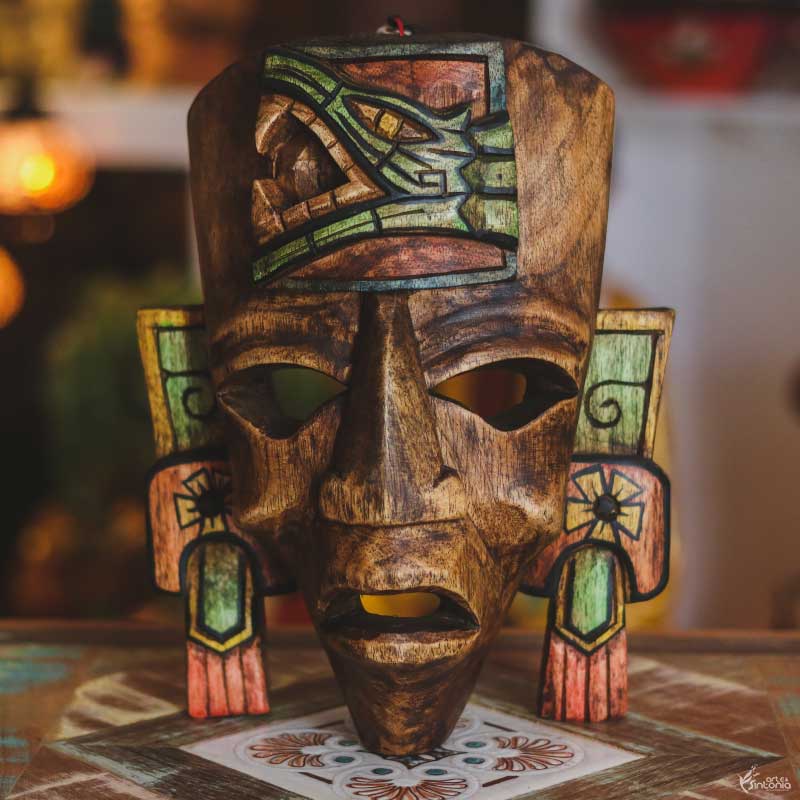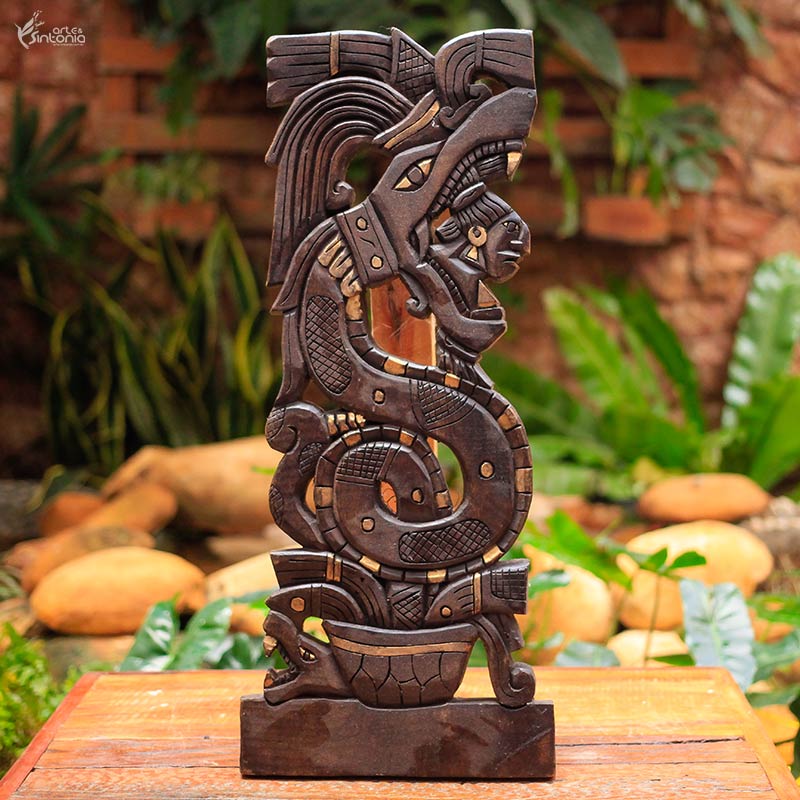Contact with Mexican art is always a source of cultural expansion. After all, the beauty expressed in sculptures , ceramics and decorative masks turns our perspective to ancestry in order to expose not only the aesthetic uniqueness evident in each piece, but the importance of Mesoamerican mythology as a historical-cultural legacy and economic development.
Places like Chichén Itzá , one of the main cities of the Mayan civilization, located on the Yucatan peninsula, inMexico , show through its archaeological sites – considered UNESCO World Heritage Sites – that the past did not collapse with time. The ancient architecture of the pyramids, like the Temple of Kukulcán ( El Castillo ), resists and continues to dictate to the future, whether through tourism or handicrafts, the legitimate value that sustains its history.
In this Mayan pyramid, the Feathered Serpent is the central figure and stands out in the architecture, especially as a stone sculpture – like the one that can be found at the base of the stairs on the west face of the building. In addition to the artistic details carved into the stones, the temple impresses with the astronomical alignment that twice a year (on the spring and autumn equinoxes) projects a shadow similar to the body of a serpent ( kaan ). This visual effect leaves the impression that Kukulcán is descending the pyramid.
Influence of the Toltec culture in Chichén Itzá

The Toltecs spread the mythology of Kukulcán to Chichén Itzá and influenced architecture.
The cult of the Serpent God ( Quetzalcóatl ) is a pre-Columbian religion that predates the founding of Chichén Itzá. It is estimated that its origin comes from the Teotihuacán, whose ancient civilization dates from the 3rd to the 8th century. However, it was only through the Toltec conquests, at the end of the Classic Period, that the myth spread in various Mexican territories – along with other cultural elements of this Mesoamerican people.
Architecture is one of these elements, with special emphasis on Tula ( Tollan ), the Toltec city-state whose artistic influence extended to the main Mayan city around 1000 AD. The inclusion of a new style in temples and sculptures, in addition to the Plumed Serpent belief itself – also present in decoration and architecture – merged with the culture of Chichén Itzá, transforming it into what we see today in archaeological remains.
The Toltec artistic domain was especially integrated into the iconography of Mayan art, especially in the square pyramid El Castillo , built between the 11th and 12th centuries, which aligned the cult of Kukulcán (the Mayan version of Quetzalcóatl) with astronomical purposes.
The Myth of the Feathered Serpent

The mythology of the Feathered Serpent is not exclusive to the Mayan culture, encompassing others such as the Aztec.
With iconography formed by the mixture of the rattlesnake and the quetzal bird – from which the name Quetzalcóatl originates, that is, the combination in Nahuatl (Aztec language) of “ quetzalli ” (quetzal tail feather) and “ coatl ” (snake) - , this important deity of the Mexican pantheon is associated with numerous events and forces of nature according to the ethnic group in which it was worshipped.
Tenochtitlán and Cholula were the main centers of devotion to the Feathered Serpent in Aztec culture. In mythology, he stood out as god of the wind (like Ehécatl ), inventor of the calendar, symbol of death and resurrection. Already in the Mayan culture, Kukulcán appeared between 200 and 1000 AD representing the serpent of war ( Waxaklahun Ubah Kan ), the god of the sky, the sun, the wind and knowledge.
The Mayan legend is the most significant and is expressed in decorative art in different interpretations. Manuscripts prior to the 9th century describe Kukulcán as a god in the form of a serpent, while texts from the 16th century characterize him as a human being who transmitted knowledge about medicine, agriculture, mathematics, astronomy and law to pre-Columbian cultures - the symbolic serpent figure.
The relevance of Mayan art in decoration

The essence of deific worship that made Mayan art a valuable legacy for Mexican culture.
Every form of Mexican art brings in its essence, techniques and artistic style the historical roots and the Mesoamerican cultural heritage. Works inspired by the Mayan legacy, especially those associated with the riches of Chichén Itzá and the iconography of Kukulcán , find in woodcarving a very expressive format to highlight interior decoration with originality.
The manifestation of the serpent entwined around figures of the nobility or devouring warriors in sacrificial rituals are the most common in decorative objects. They appear illustrating masks and wooden panels , in a natural tone or with colored paint, always ratifying their historical values so that Mexican culture becomes a differentiating factor in the environment.
The non-obvious aesthetics of the pieces, produced by local artists, lead the decoration to its best, breaking free from limited or pre-defined styles and beauty ideals. The Mayan arts available in our online store manage, like few others, to interconnect a triple of greatness: the unique aesthetic, the craftsmanship focused on ancestry and the cultural heritage of Mexico .
Namaste!
Milene Sousa – Art & Tune











3 comments
Visa
[url=http://www.gt4500z20630hs89jfm15sm4szvz2e3ts.org/]uvndcvqhfwq[/url]
avndcvqhfwq
vndcvqhfwq http://www.gt4500z20630hs89jfm15sm4szvz2e3ts.org/
Visa
ahyqhmxvnzi
hyqhmxvnzi http://www.g48w079qrpi2980q86ux4o7ephx0bz95s.org/
[url=http://www.g48w079qrpi2980q86ux4o7ephx0bz95s.org/]uhyqhmxvnzi[/url]
Visa
[url=http://www.gy2c76z03sh62o6fj4nmzwntq9116264s.org/]upzbcpzehi[/url]
pzbcpzehi http://www.gy2c76z03sh62o6fj4nmzwntq9116264s.org/
apzbcpzehi